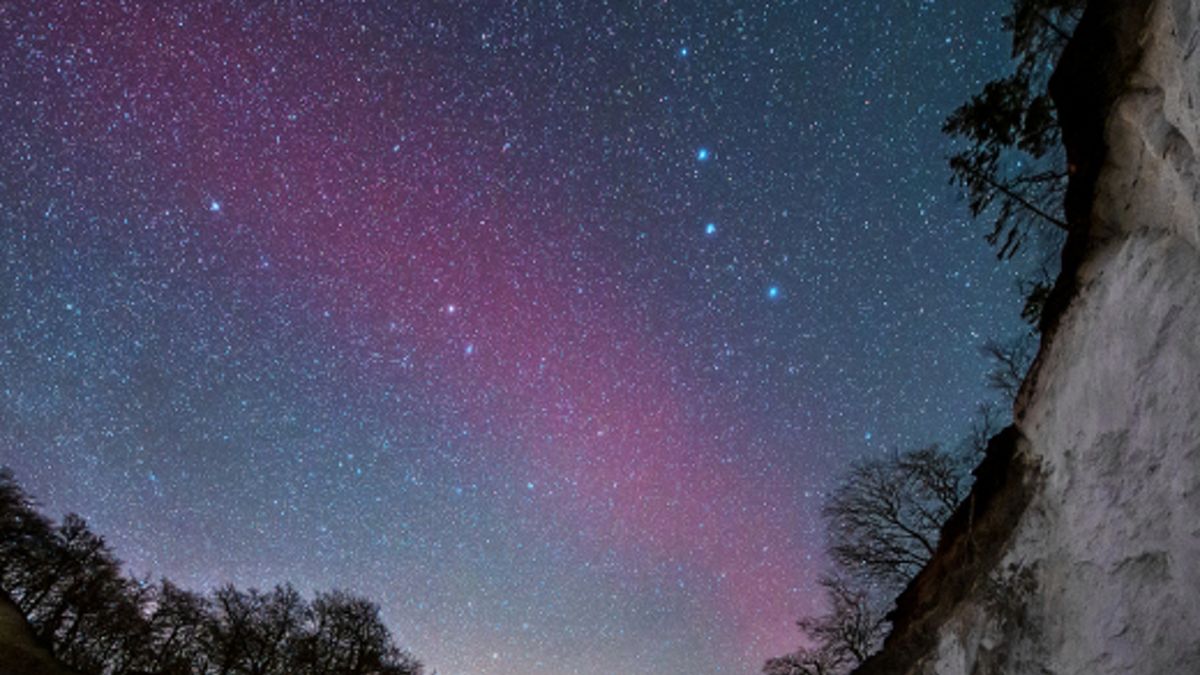Rare blood-red arc of light shines in the Scandinavian sky. What is it?
By Harry Baker published 2 days ago
A river of hazy red light stretched across the night sky over Denmark after the most powerful solar storm to hit Earth for six years slammed into our planet. The rare phenomenon is not an aurora.

The band of light illuminated the skies above Denmark on March 23. (Image credit: Ruslan Merzlyakov)
A bright red streak of light appeared in the sky above parts of Scandinavia last week after a surprise solar storm smashed into Earth and triggered stunning auroras across the planet. But the bright red band was not an aurora — it was something much rarer.
The streak, which appeared as a river of hazy red light that stretched all the way across the night sky, was most prominently visible above Denmark. Astrophotographer Ruslan Merzlyakov(opens in new tab) snapped a spectacular shot(opens in new tab) of the peculiar light show on March 23 above Møns Klint, a set of limestone cliffs on the Danish island of Møn in the Baltic Sea.
The SAR coincided with the most powerful geomagnetic storm to hit Earth for six years, which was triggered by a surprise coronal mass ejection — a gargantuan, fast-moving blob of plasma and magnetic field released from the sun — that was spat out of a massive hole in the sun wider than 20 Earths.
The unusual phenomenon is known as a stable auroral red arc (SAR), but despite the name, it is not an aurora or particularly stable, according to Spaceweather.com(opens in new tab). Instead, the light is emitted by oxygen molecules in the upper atmosphere that have become superheated by Earth's ring current system, a massive loop of electric current that surrounds our planet.
More:
https://www.livescience.com/rare-blood-red-arc-of-light-shines-in-the-scandinavian-sky-what-is-it
